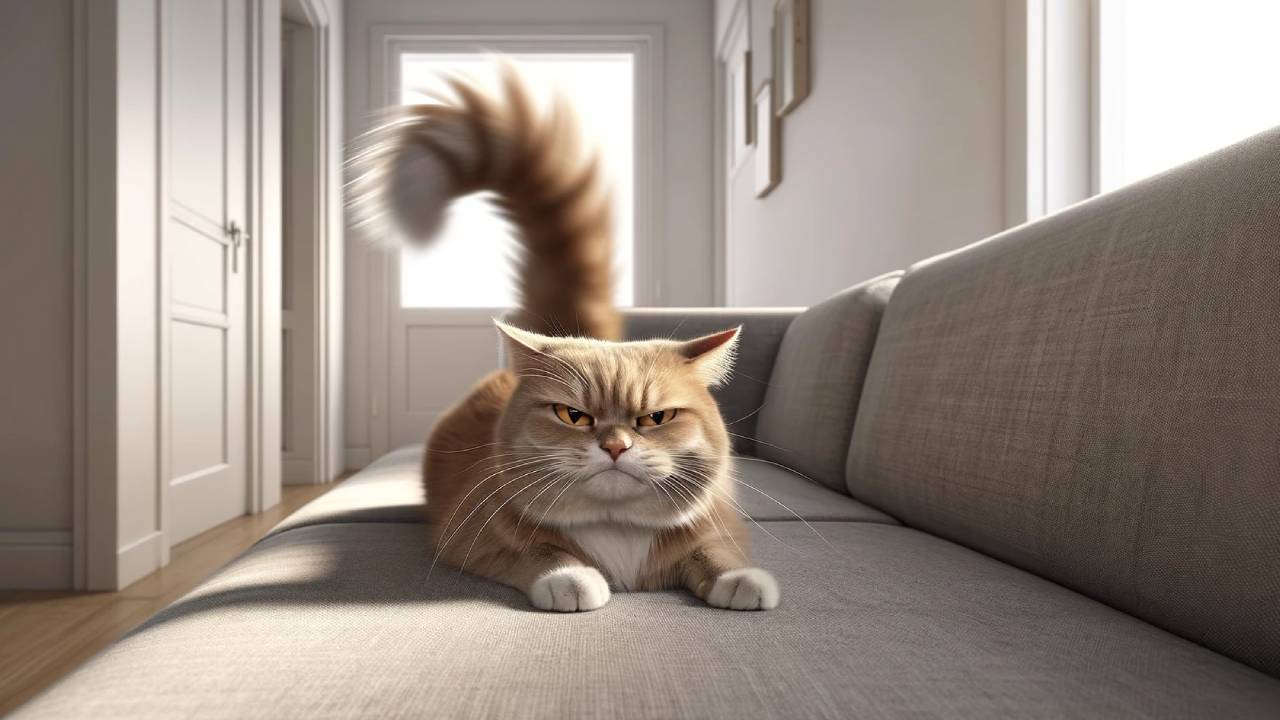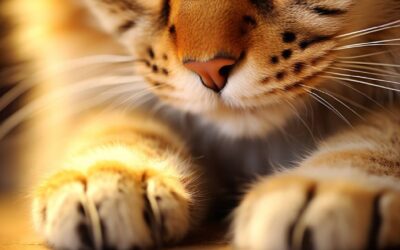Cats are enigmatic creatures, often expressing their emotions through subtle gestures. One such behavior that holds the key to their feelings is tail twitching.
Let’s unravel the intricate language of cat tails, uncovering the mysterious messages behind their various movements.
What Does Tail Twitching Mean?
Cat tail wagging is a complex and multifaceted behavior that offers a window into the intricate world of feline communication. While many associate tail wagging with dogs, it’s equally significant in the feline realm, although with distinct meanings.
Emotional Expression
Just as humans use body language to convey emotions, cats use their tails to communicate feelings. When a cat wags its tail, it signals that something is stirring within them. The specific emotion being expressed, however, can vary widely.
Agitation and Irritation
One of the most common reasons for tail wagging in cats is agitation or irritation. This can be triggered by encountering a new and unfamiliar scent, a sudden loud noise, or even a fellow feline invading their territory. The intensity of the wagging often corresponds to the degree of irritation they’re experiencing.
Playful Anticipation
Tail wagging can indicate excitement and playful anticipation. You might notice a gentle tail swaying when a cat is about to pounce on a toy or engage in a game. Wide eyes and a playful posture usually accompany this type of wagging.
Nervousness and Anxiety
If a cat’s tail wags in a low, quick, and tense manner, it could signify nervousness or anxiety. This might occur in unfamiliar environments or when encountering new people or animals. It signals that your cat is on edge and might need time to acclimate.
Understanding tail wagging also involves attention to the context and other body language cues. A cat’s overall demeanor, ear position, and eye expression can provide additional insights into what their tail wagging means.

Cat Tail Movements
Cat tail movements are a fascinating and intricate form of feline communication. Cats use their tails to convey various emotions, intentions, and moods. Each tail movement is a silent language that helps them interact with other cats, animals, and humans. Here are some common cat tail movements and what they typically mean:
- Tail Twitching or Quivering
A cat’s tail twitches or quivers usually indicate excitement or anticipation. This can occur when a cat is about to pounce on a toy or prey. It signifies they are fully engaged and focused on the task.
- Tail Puffing
A puffed-up tail is a sign of fear or extreme agitation. When a cat’s tail becomes fluffy and appears more significant than usual, they try to make themselves look bigger and more intimidating to potential threats. This behavior is often accompanied by other defensive postures, such as arching the back and hissing.
- Tail Straight Up
When a cat holds its tail straight up, it shows confidence and contentment. They are feeling secure and comfortable in their environment. Sometimes, they may even give you a little tail quiver as a friendly greeting.
- Tail Flicking or Swishing
When irritated or agitated, a cat may flick or swish its tail. This can happen when annoyed with something or someone, and it’s often a warning sign that they may lash out if the irritation continues.
- Slow, Graceful Tail Lashing
This movement typically occurs when a cat is intensely focused on something, such as stalking prey or observing a bird outside. It’s a sign of concentration and anticipation, showing that the cat is ready to spring into action.
It’s essential to pay attention to the context in which these movements occur, as a cat’s body language combines various signals, including ear position, vocalizations, and overall posture.
Conclusion
Cracking the code of cat tail twitching adds depth to your understanding of your feline companion. Each flick, quiver, or curl carries a nuanced message that reveals their emotions and perceptions.
Paying close attention to these subtle cues can strengthen the bond between you and your whiskered friend and ensure their well-being.

FAQs
Is tail twitching the same as tail wagging?
Tail twitching is a broader term encompassing various tail movements, including wagging. Wagging usually implies emotions like agitation while twitching can indicate excitement, curiosity, or even nervousness.
Why do cats twitch their tails while sleeping?
Twitching during sleep is often associated with dreaming. Your cat might be reenacting a hunting scenario or experiencing random nerve firings during the REM phase.
Can illness cause unusual tail movements?
Yes, certain illnesses or injuries might lead to abnormal tail movements. If you notice sudden or consistent changes in tail behavior, consult a veterinarian.
Do all cats wrap their tails around humans?
Not all cats display this behavior. It depends on their personality, level of trust, and comfort with the individual.
Is tail fluffing the same as piloerection?
Tail fluffing is a type of piloerection, a reflex that makes a cat’s fur stand on end. It’s an automatic response to various stimuli, including fear and excitement.
Can tail movements help me train my cat?
Yes, understanding your cat’s tail movements can enhance communication during training. Tail behavior can reveal when they’re receptive or stressed, aiding in effective teaching.






I was curious about my cat’s tail twitching, and this article answered all my questions. It’s amazing how much their tails can communicate